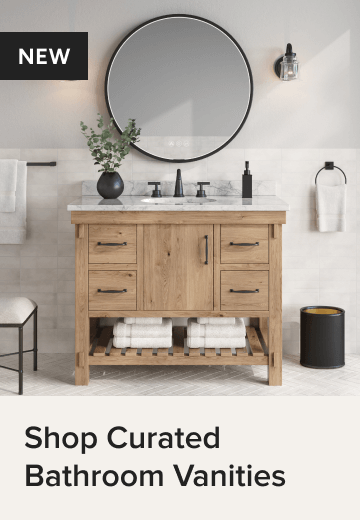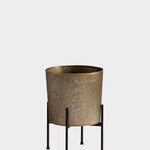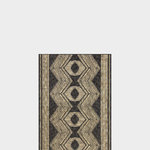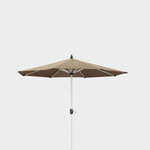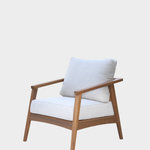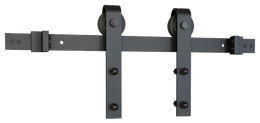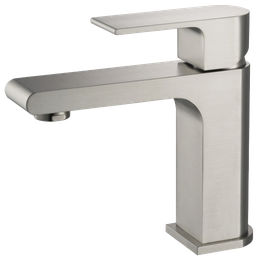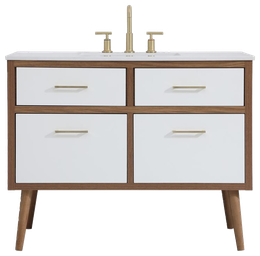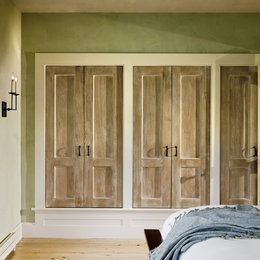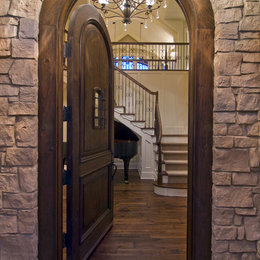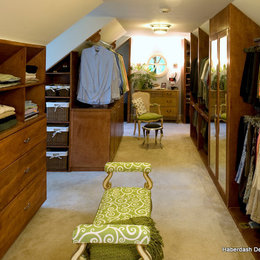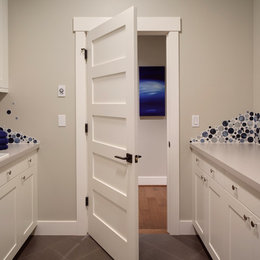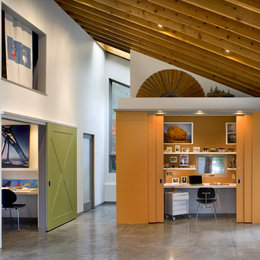FREE shipping on orders over $49!* Details
- All Products
- Exterior
- Windows & Doors
- Doors
- Interior Doors
Interior and Closet Doors
Item 1 of 15
Sort by:
Price
16,898 Results
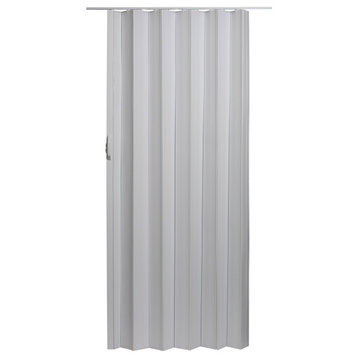
Spectrum Via Folding Door, White, 48"x80"by LTL Home Products(24)
$66
The Via Folding Door offers value and durability in a solid vinyl panel door with flexible vinyl hinges. Maintenance-free door. Track and Hardware Included
Best Seller
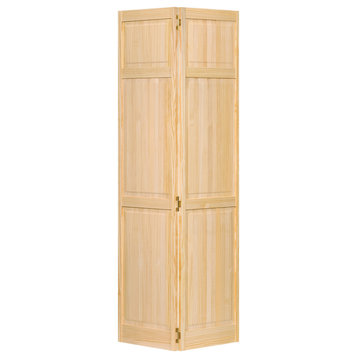
Bi-fold Closet Door, Traditional 6-Panel, 1"x32"x80"by In and Out Home(1864)
SALE
$148$322
- High quality vertical grain
- Double hip panels
- FSC certified
- 5 Year limited warranty
- Hardware included
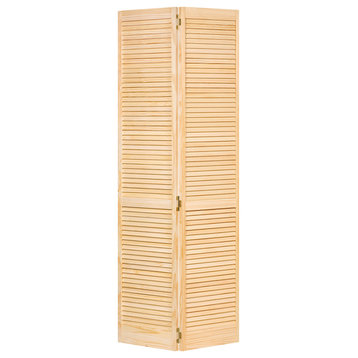
Closet Door, Bi-fold, Kimberly Bay Traditional Louver-Louver Clear, 80x32by In & Out Home Products(581)
SALE
$129$308
Add the natural beauty and warmth of wood to your home with our solid pine Bi-fold Doors. The traditional louver louver design gives the doors a clean, traditional style that will complement any decor. The doors are durable, made of solid Pine and are easy to install (hardware is included). Our bi-fold doors are unfinished and can be painted or stained to match your decor. The high-quality vertical grain delivers the best appearance and performance.
- High quality vertical grain
- 1.125 inch wide slats
- Unfinished Pine
- FSC certified
- 5 Year limited warranty
- Hardware included
- Sizing Chart
- Installation Instructions
- Finishing Guide
Best Seller
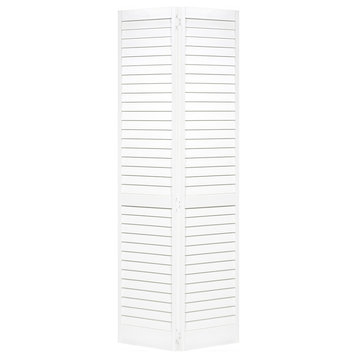
Plantation Bi-fold Closet Door, Louver/Louver, White, 1"x32"x80"by In and Out Home(1235)
SALE
$165$338
- High quality vertical grain
- Two inch wide slats
- FSC certified
- 5 Year limited warranty
- Hardware included
- Sizing Chart
- Installation Instructions
- Finishing Guide
Best Seller
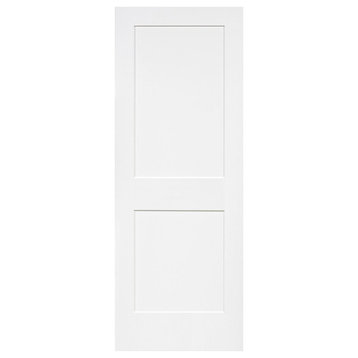
2-Panel Kimberly Bay Door, Interior Slab Shaker, White, 1.375"x32"x80"by In and Out Home(344)
SALE
$337$722
- Primed White
- FSC certified
- 5 Year limited warranty
- Hardware not included
Best Seller
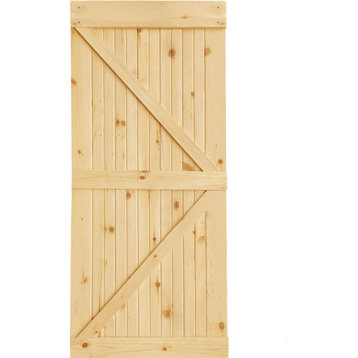
Barn Door KD DIY K-Bar 83.5" x 30" x 1.375"by In and Out Home(424)
SALE
$173$489
Barn Door DIY Knotty Pine K-Rail Unfinished 83.5 in x 30 in. x 1.375 in
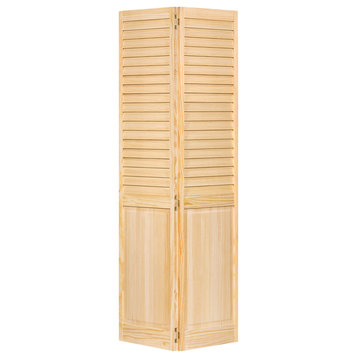
Plantation Bi-fold Closet Door, Louver-Panel, Clear, 1"x24"x80"by In and Out Home(768)
SALE
$136$248
- High quality vertical grain
- Two inch wide slats on top
- Double hip panel on bottom
- FSC certified
- 5 Year limited warranty
- Hardware included
- Sizing Chart
- Installation Instructions
- Finishing Guide
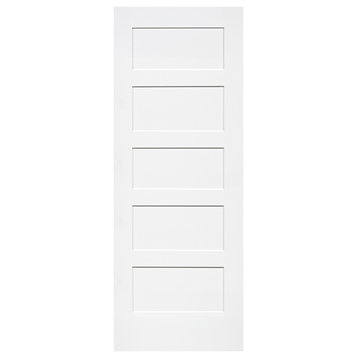
5-Panel Kimberly Bay Door, Interior Slab Shaker, White, 1.375"x32"x80"by In and Out Home(298)
SALE
$287$722
- Primed White
- FSC certified
- 5 Year limited warranty
- Hardware not included
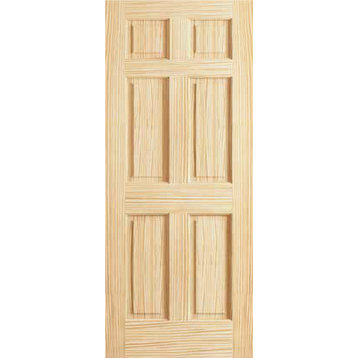
Kimberly Bay Interior Door Colonial 6-Panel, 1.375"x32"x80"by In and Out Home(460)
SALE
$265$706
Solid wood core interior door,1-3/8 in. thick
- Double Hip Panels
- Suitable for staining or painting.
- Doors are full and square.
- Environmentally friendly - FSC certified
- 5 Year limited warranty
- Hardware not included
1-Panel Kimberly Bay Door, Interior Slab Shaker, White, 1.375"x28"x80"by In and Out Home(401)
$408
Free Shipping
- Primed White
- FSC certified
- 5 Year limited warranty
- Hardware not included
Interior Door Louvered Panel, Unfinished Wood, Solid Core, 80"x30"x1.375"by In and Out Home(126)
SALE
$339$712
Add the natural beauty and warmth of wood to your home with our solid pine louver panel style interior doors. Our louver doors are unfinished and can be painted to match your decor. The doors are constructed from solid pine from environmentally-friendly, sustainable yield forests. The high-quality vertical grain delivers the best appearance and performance.
- Louver-Panel design with open space between louvers for ventilation
- Louvers are 1.25 in deep
- Double Hip Panel
- Wood from environment friendly sustained yield forest
- Hardware is not included
Closet Door, Bi-fold, Kimberly Bay Traditional Louver-Louver White, 80"x36"by In & Out Home Products(850)
SALE
$151$334
Add the natural beauty and warmth of wood to your home with our solid pine Bi-fold Doors. The traditional louver louver design gives the doors a clean, traditional style that will complement any decor. The doors are durable, made of solid Pine and are easy to install (hardware is included). Our bi-fold doors are primed white and can be painted to match your decor. The high-quality vertical grain delivers the best appearance and performance.
- High quality vertical grain
- 1.125 inch wide slats
- Primed White
- FSC certified
- 5 Year limited warranty
- Hardware included
- Sizing Chart
- Installation Instructions
- Finishing Guide
Best Seller
Modern Style Glass and Manufactured Wood Barn Door with Hardware Kit, 42"w X 84"by ARKDESIGN HOME(1)
$520
Free Shipping
Double sliding barn door is made of high-quality MDF material, high-grade slide rail, open and flexible, safe and reliable, and has a long service life. Barn door hardware kit has the characteristics of fireproof, waterproof and rustproof, and can be installed both internally and externally.
White barn door there are two sizes of 36x84inch and 42x84inch, suitable for double doors.Sliding barn doors easy to install, simple installation manual, detailed step instructions, you can easily complete the installation.
PACKING LIST: Barn door with glass includes accessories to installing the sliding door: 1x 6.6 ft track, 2x hangers, 5x spacer, 2x door stoppers, 1x floor guide, 12" handle.Double barn doors with hardware, space saving,perfect decoration for any room.
Double barn door tracks with 3 lattice, easy to assemble.Barn door hardware set to pass 100,000 cycles run time and 200 hours salt spray test without worrying about quality.
Stylish barn door, top mounted sliding track, suitable for double doors with 3 compartments.Double sliding barn door is suitable for shower, balcony, kitchen, warehouse, bedroom, din room, etc.
White barn door there are two sizes of 36x84inch and 42x84inch, suitable for double doors.Sliding barn doors easy to install, simple installation manual, detailed step instructions, you can easily complete the installation.
PACKING LIST: Barn door with glass includes accessories to installing the sliding door: 1x 6.6 ft track, 2x hangers, 5x spacer, 2x door stoppers, 1x floor guide, 12" handle.Double barn doors with hardware, space saving,perfect decoration for any room.
Double barn door tracks with 3 lattice, easy to assemble.Barn door hardware set to pass 100,000 cycles run time and 200 hours salt spray test without worrying about quality.
Stylish barn door, top mounted sliding track, suitable for double doors with 3 compartments.Double sliding barn door is suitable for shower, balcony, kitchen, warehouse, bedroom, din room, etc.
Kimberly Bay Louver Interior Door Slab, Clear, Pine, Solid, 80"x18"x1.375"by In and Out Home(199)
SALE
$168$337
Add the natural beauty and warmth of wood to your home with our solid pine louver style interior doors. Our louver doors are unfinished and can be painted to match your decor. The doors are constructed from solid pine from environmentally-friendly, sustainable yield forests. The high-quality vertical grain delivers the best appearance and performance.
- Doors are net 24 in. x 80 in.
- Louver-Louver design
- Louvers are 1.25 in deep
- Wood from environment friendly sustained yield forest
- Hardware is not included
- Doors are full and square
- 5 Year limited warranty
Best Seller
Closet Door, Bi-fold, Plantation Louver-Louver White 80" x 28"by In and Out Home(1229)
SALE
$156$312
Closet Door, Bi-fold, Kimberly Bay® Plantation Louver-Louver White 80 in x 28 in.
3-Panel Slab Barn Door 24 x 80|Lucia 31 Matte White|Wood Kitchen Pantry Shakerby SARTODOORS(5)
$599
Free Shipping
- SartoDoors - the european doors of modern and traditional design.
- Best choice for bedroom, bathroom or closet - warm look and bright colors, high quality materials and soft opening.
- Finish - eco-veneer RENOLIT (Germany).
- Door made of solid pine wood with mdf.
- Thickness of the door - 1 3/5", smooth 3 Panel door.
Set includes:
- Door slab without pre-cuts
3-Panel Kimberly Bay Door, Interior Slab Shaker, White, 80"x30"x1.375"by In and Out Home(241)
$324
The Shaker door design gives the doors a clean, traditional style that will complement any decor. The doors are durable, made of solid Pine, with a MDF face for a smooth clean finish. The doors are easy to install. Our Shaker doors are primed and can be painted to match your decor. The doors are constructed from solid pine from environmentally-friendly, sustainable yield forests.
- These are door slabs (not prehung) and no bore holes predrilled
- Primed Bright White
- 3 Panel Design
- Hardware is not included
Closet Door, Bi-fold, Traditional Six Panel White 80" x 28"by In and Out Home(321)
$185
Closet Door, Bi-fold, Kimberly Bay® Traditional Six Panel White 80 in. x 28 in.
Louver Louver Door, Solid Pine Interior Slab White Traditional 80" x 18"by In and Out Home(26)
SALE
$173$426
Louver Louver Door, Solid Pine Interior Slab White Traditional 80 in. x 18 in.
Spectrum Elite Folding Door, 48"x80"by Spectrum(426)
SALE
$131$170
1/4" thick hollow core, double wall vinyl construction Durable and maintenance free Accordion door design is ideal for closets and tight spaces Satin Silver finish has a scratch resistant clear UV varnish for added durability Track, hardware and easy installation instructions included.
Plantation Bi-fold Closet Door, Louver/Louver, Clear, 1"x30"x80"by In and Out Home(639)
$138
- High quality vertical grain
- Two inch wide slats
- FSC certified
- 5 Year limited warranty
- Hardware included
- Sizing Chart
- Installation Instructions
- Finishing Guide
Best Seller
Shaker Wood Sliding Barn Door with 10 different panel designs, Finished (Painted), 38"x84"by glass-door.us(1)
SALE
$1,256$1,570
Free Shipping
Shaker Panel Sliding Barn Door with 10 different panel designs + Hardware Kit Wood Cover Plate (Fascia)
A sliding Shaker Panel Sliding Barn Door separates rooms from each other, provides privacy and is space-saving. Annoying door slamming is a thing of the past, as this sliding door runs over smooth-running rollers. The door is easy to install, durable and robust.
**
**
**
Calculation of door dimension in relation to the wall opening
Add at least 2" inches or more to the width and 1" inch or more to height e.g. your wall opening is 30" x 80" inches so your door dimensions at least should be 32" x 81" inches or more for a perfect fit.
**
**
+++if you choose the Finished-Painted option, the door will be painted with the RAL9003 Polyurethane color code+++
**
**
A sliding Shaker Panel Sliding Barn Door separates rooms from each other, provides privacy and is space-saving. Annoying door slamming is a thing of the past, as this sliding door runs over smooth-running rollers. The door is easy to install, durable and robust.
**
Quiet & smooth running:
The maintenance-free ball bearing runners ensure extremely smooth running - even after many years of intensive use. Floor guide provide stability and prevent unpleasant swinging. The included handles make it easy to open and close the door.**
Easy installation:
The installation of the sliding door is easy even for inexperienced hobby craftsmen. The complete mounting accessories including high-quality screws and dowels are included. The sliding system can be attached directly to the wall or via a door frame. Each delivery contains a detailed installation manual.**
Calculation of door dimension in relation to the wall opening
Add at least 2" inches or more to the width and 1" inch or more to height e.g. your wall opening is 30" x 80" inches so your door dimensions at least should be 32" x 81" inches or more for a perfect fit.
**
Options available:
- Choose between 10 different panel designs (sending in a message after orderin)
- Primed (ready to paint) or Painted Finished
A wide range of standard dimensions
- Door Opening direction: Left or right opening
Door Construction:
In order to stand out from the competition we offer our wood doors with glass/mirror insert with a higher wood proportion. This means that the top and side panels are 6" wide so 2" wider than the standard. The bottom part of the wooden door is up to 9" high. This makes our doors more robust and durable.**
+++if you choose the Finished-Painted option, the door will be painted with the RAL9003 Polyurethane color code+++
**
Optional Polyurethane Coating:
Polyurethane wood finish is used to coat surfaces, protecting them from scratches and helping to prevent water damage. The coating gives wood doors a glossy, smooth finish and improves durability. Compared to normal wood coatings, polyurethane coating (duroplastic resin) is more scratch resistant, durable and does not fade.**
Barn door features:
- Handmade
- Core Type: Solid Core
- Panel design on both sides
- Picture illustrates a finished door
- Unfinished: Double Primed coated, ready for a final finish
- Finished: Primed or Painted (High quality Polyurethane Coating (only with Door Finish: Finished)
- Wood Type: Moisture Resistant Medium Density Fiberboard
- Resists against attacks of moths and woodworm
- With groove in bottom of Barn door
- Panel thickness: 1/4”- 3/8 (6mm-9mm)
- Barn door slab does not warp or bend when exposed to moisture
- Door thickness: 1-3/8"
- Weight: Approx. 98-130 Pounds
- Preassembled: Yes
- Longevity
- Withstand moisture in high humidity areas
- Resists against attacks of moths and woodworm
- Doors are no pre-drilled for the hardware and Handle
- Moisture-repellent resin
- Easy care
- Durable
- Easy-to-install self-assembly
- Standard sliding system Length 6.6FT for doors (26" - 40" inches width)
- Standard Sliding system Length Between 8 to 9 FT for doors (41" - 48" inches width)
Benefits:
- Handcrafted
- Suitable for mounting with and without door frame
- Factory direct shipment
- Optional: with High quality Polyurethane Coating
Scope of delivery:
- 1x Panel Shaker Sliding Barn Door slab (of your choice)
- 1x Sliding Hardware Kit
- 1x Wood Cover Plate / Fascia
- 1x Pair of handles
Delivery:
Please note that each door is made especially for you, for this reason, our delivery time is 25 - 35 business days. Whereas we will try to ensure compliance with any delivery dates given, dates are an estimate only. In case of delays, we will inform you immediately. To keep the shipping costs as low as possible we send the door and the hardware with 2 separate deliveries.Best Seller
Interior Solid French Door Clear Glass, Felicia 3355 Matte White, 30" X 80"by SARTODOORS(1)
SALE
$795$992
Free Shipping
- SartoDoors - the european doors of modern and traditional design. French style here!
- Best choice for bedroom, bathroom or closet - warm look and bright colors, high quality materials and soft opening.
- Finish - eco-veneer made in Italy.
- Door made of solid pine wood.
- Rough opening can be calculated: door width" + 2 1/2"; door height" + 2".
Set includes:
- Door slab;
- Trims (2.95" wide);
- Frames (for wall thickness from 4" to 5 1/2");
- Passage lever/knob;
- Non-mortise hinges;
- SET INCLUDES- white door with 12 lites glass, trims 2.95 in wide, frames (for wall up to 5 1/2), non-mortise hinges, passage Satin Nickel square door handle/knob.
- LIKE PRE-HUNG DOOR- Door is not pre-attached to the frame. Set consists of all the necessary parts hanging the door. Frames connect before the installation. Hinges not require the slots for installation. Cut for handle can be made within 5 minutes.
- WOOD DOOR- Door made of solid pine wood and covered by eco-veneer. Pre-Finished, Eco Friendly, High Durability, Clean Ability and Quality, Stability Scratch and Stain Resistant
- CUSTOM SIZE Door can be trimmed on 3/4 on top and bottom, on 3/4 on left and right side as well. Many styles and finished of lever/knob can be provided per request
- FULL RANGE OF HARDWARE- Every part can be customize on your desire. A lot of sizes and finishing are available. Please contact us to get a sample of door color. Hardware can be delivered separately.
Best Seller
Kimberly Bay Interior Door, Colonial 2-Panel Arch, V-Grooves, 1.375"x30"x80"by In and Out Home(167)
SALE
$363$722
Solid wood core interior door,1-3/8 in. thick
- Double Hip Panels
- Suitable for staining or painting.
- Doors are full and square.
- Environmentally friendly - FSC certified
- 5 Year limited warranty
- Hardware not included
Louver Louver Plantation Interior Door Slab, White Wood Solid Core, 80"x30"by In and Out Home(442)
SALE
$328$698
Add the warmth of wood to your home with our solid Plantation Louvered style interior Doors. The wide louvers gives the doors a clean, modern style that will complement any decor. The doors are durable, made of solid pine and are easy to install. Our Plantation doors are primed white and can be painted to match your decor. The doors are constructed from solid pine from environmentally-friendly, sustainable yield forests. The high-quality vertical grain delivers the best appearance and performance.
- These are door slabs (not pre-hung)
- Solid wood core
- Wide 2 in. open louver slats
- No bore holes
- Open louvers to let air flow.
- Wood from environment friendly sustained yield forest
- Hardware is not included
- 5 Year limited warranty
Best Seller
Closet Door Bi-fold Traditional Six Panel Solid Core Unfinished 80"x28"by In and Out Home(1833)
SALE
$155$304
Closet Door, Bi-fold, Kimberly Bay® Traditional Six Panel Clear 80 in. x 28 in.
Spectrum Via Folding Door, Oak, 48"x80"by LTL Home Products(24)
SALE
$66$84
The Via Folding Door offers value and durability in a solid vinyl panel door with flexible vinyl hinges. Maintenance-free door. Track and Hardware Included
Best Seller
Modern Solid Interior Door 30 x 80 | Planum 0010 Black Matte | Pre-hung Setby SARTODOORS(2)
$880
Free Shipping
- SartoDoors - the european doors of modern minimal design.
- Best choice for bedroom, bathroom or closet - warm look and bright colors, high quality materials and soft opening.
- Finish - eco-veneer made in Italy.
- Door made of solid pine wood with honeycomb.
- Thickness of the door - 1 3/5".
- Door is not pre-cut for the hardware. Assembly of frames and trims required. Door works with all swing directions.
- Rough opening can be calculated: “door width” + 2 1/2”; “door height” + 2”.
Set includes:
- Door slab;
- Trims (2.95” wide);
- Frames (for wall thickness from 4” to 5 1/2”);
- Passage lever/knob;
- Non-mortise hinges;
Modern Solid French Door Frosted Glass 28 x 80 | Planum 2102 Black Matteby SARTODOORS(4)
$880
Free Shipping
- SartoDoors - the european doors of modern minimal design.
- Best choice for bedroom, bathroom or closet - warm look and bright colors, high quality materials and soft opening.
- Finish - eco-veneer made in Italy.
- Door made of solid pine wood.
- Thickness of the door - 1 3/5".
- Rough opening can be calculated: “door width” + 2 1/2”; “door height” + 2”.
Set includes:
- Door slab;
- Trims (2.95” wide);
- Frames (for wall thickness from 4” to 5 1/2”);
- Passage lever/knob;
- Non-mortise hinges;
Lite Barn Door Panel 28 x 80 | Lucia 22 Matte White & Glass|Panels Pocket Closetby SARTODOORS(84)
$610
Free Shipping
- SartoDoors - the european doors of modern and traditional design.
- Best choice for bedroom, bathroom or closet - warm look and bright colors, high quality materials and soft opening.
- Finish - eco-veneer RENOLIT (Germany).
- Door made of solid pine wood with mdf.
- Thickness of the door - 1 3/5".
- 1/4” frosted opaque glass with privacy function.
Set includes:
- Door slab without pre-cuts
Barn Door 24 x 80 & Stainless Steel 6.6ft Hardware | Quadro 4111 White Ashby SARTODOORS(115)
$741
Free Shipping
- SartoDoors - the european doors of modern minimal design.
- Best choice for bedroom, bathroom or closet - warm look and bright colors, high quality materials and soft opening.
- Finish - eco-veneer CIPLEX (Italy).
- Door made of solid MDF.
- Thickness of the door - 1 3/5". Thickness of the core is 1/2”
Set includes:
- Door slab;
- Stainless steel rail 6.6FT with predrilled holes;
- Hangers with wheels;
- Door stops;
- Floor guide;
- All mounting screws;
Interior Solid French Double Doors Clear Glass 3 Lites, Lucia 2555 Matte White, 72" X 96"by SARTODOORS(32)
$1,458
Free Shipping
- SartoDoors - the european doors of modern and traditional design. French style here!
- Best choice for bedroom, bathroom or closet - warm look and bright colors, high quality materials and soft opening.
- Finish - eco-veneer made in Italy.
- Door made of solid pine wood.
- Rough opening can be calculated: door width" + 2 1/2"; door height" + 2".
Set includes:
- 2 doors slabs;
- Trims (2.95" wide);
- Frames (for wall thickness from 4" to 5 1/2");
- 2 passage lever/knob;
- Non-mortise hinges;
- SET INCLUDES- 2 white doors with lites 36x96 each with Clear glass, trims 2.95 inches width, frames (for wall up to 5 1/2), non-mortise hinges, passage Satin Nickel square door handles/knobs.
- LIKE PRE-HUNG DOOR- Door is not pre-attached to the frame. Set consists of all the necessary parts hanging the door. Frames connect before the installation. Hinges not require the slots for installation. Cut for handle can be made within 5 minutes.
- WOOD DOOR- Door made of solid pine wood and covered by eco-veneer. Pre-Finished, Eco Friendly, High Durability, Clean Ability and Quality, Stability Scratch and Stain Resistant
- CUSTOM SIZE Door can be trimmed on 3/4 on top and bottom, on 3/4 on left and right side as well. Many styles of lever/knob can be provided per request
- FULL RANGE OF HARDWARE- Every part can be customize on your desire. A lot of sizes and finishing are available. Please contact us to get a sample of door color. Hardware can be delivered separately.
1-Lite Pantry Frosted Privacy Glass French Door Unfinished, 24"x80"x 1.375"by Frameport(50)
$744
Free Shipping
- Full sized with squared edges (no prefit or bevels) allow for exactly matching your existing door frame and hardware, or for use in applications like sliding barn doors
- No hardware, machining or prefit.
- Actual width: no prefit, doors are stated dimensions: Example:18" wide door is a nominal 18" wide; 24" wide door is a nominal 24" wide
- Actual height: no prefit, doors are stated dimensions: 80" tall door is a nominal 80" height.
- Actual thickness 1-3/8"
- Glass type - Clear
- Sticking profile: Ovolo
- Tempered Glass in compliance with ANSI Z97.1-2004 (American National Standard Institute)
- All glass panels are protected with peel-off plastic foil on both sides for easy finishing and clean-up with no mess.
- The Five (5) Year Limited Warranty includes one (1) year coverage for the factory finish, providing you with peace of mind for your investment.
- Stile and Rail construction with true divided light (TDL) glass inserts.
- The stiles are made from engineered lumber, significantly reducing the possibility of your doors warping.
- The rails are connected by as many as six (6) wooden dowels on each side, ensuring a solid, durable joint that won't warp, twist or spread.
- The top and bottom are prefinished by the factory to prevent moisture intrusion and the warping, twisting and cracking it can cause.
Best Seller
Solid French Double Doors / Mela 7001 Matte White, 48" X 80" ( 2* 24x80)by SARTODOORS(2)
$1,161
Free Shipping
Collection of classic painted doors with a discreet design. Clean lines, simple and unabashed design. Multi-layer finishing with enamels followed by matt varnishes makes the surface smooth, almost velvety.
Premium decorative films are made on the basis of polypropylene. A special feature of this fims is outstanding imitation effect of a painted surface. Free from solvents and formaldehyde the Premium films are also extremely environmentally friendly and contribute to a healthier living climate. High quality material surface makes it easy to clean and guarantees outstanding resistance against mechanical stress and chemicals..
LIKE PRE-HUNG DOOR- Door is not pre-attached to the frame. Set consists of all the necessary parts hanging the door. Frames connect before the installation. Hinges not require the slots for installation. Cut for handle can be made within 5 minutes.
STURDY DOOR- Core of the door is MDF with white coating. Pre-Finished, Eco Friendly, High Durability, Clean Ability and Quality, Stability Scratch and Stain Resistant
CUSTOM SIZE - Door can be trimmed on 3/4 on top and bottom, on 3/4 on left and right side as well. Many styles of lever/knob can be provided per request
CUSTOM HARDWARE KITS - Every part can be customized on customer desire. A lot of sizes and finishing are available. Please contact us to get a sample of door color. Hardware can be delivered separately.
Premium decorative films are made on the basis of polypropylene. A special feature of this fims is outstanding imitation effect of a painted surface. Free from solvents and formaldehyde the Premium films are also extremely environmentally friendly and contribute to a healthier living climate. High quality material surface makes it easy to clean and guarantees outstanding resistance against mechanical stress and chemicals..
- Finish - white paint.
- Door core - MDF (engineered wood).
- Thickness of the door - 1 1/2". Doors are not pre-cut for the hardware. Assembly of frames and trims required. Doors work with all swing directions.
- Rough opening can be calculated: door width" + 2"; door height" + 1 1/2".
What included:
- 2 doors slabs;
- Trims (2.95" wide);
- Frames (for wall thickness from 4" to 5");
- 2 passage lever/knob;
- Non-mortise hinges;
LIKE PRE-HUNG DOOR- Door is not pre-attached to the frame. Set consists of all the necessary parts hanging the door. Frames connect before the installation. Hinges not require the slots for installation. Cut for handle can be made within 5 minutes.
STURDY DOOR- Core of the door is MDF with white coating. Pre-Finished, Eco Friendly, High Durability, Clean Ability and Quality, Stability Scratch and Stain Resistant
CUSTOM SIZE - Door can be trimmed on 3/4 on top and bottom, on 3/4 on left and right side as well. Many styles of lever/knob can be provided per request
CUSTOM HARDWARE KITS - Every part can be customized on customer desire. A lot of sizes and finishing are available. Please contact us to get a sample of door color. Hardware can be delivered separately.
Best Seller
Solid French Double Doors Glass | Felicia 3312 Matte White, 48" X 80"by SARTODOORS(12)
$1,160
Free Shipping
- SartoDoors - the european doors of modern and traditional design. French style here!
- Best choice for bedroom, bathroom or closet - warm look and bright colors, high quality materials and soft opening.
- Finish - eco-veneer made in Italy.
- Door made of solid pine wood.
- Thickness of the door - 1 3/5".
- Rough opening can be calculated: “door width” + 2 1/2”; “door height” + 2”.
Set includes:
- 2 doors slabs;
- Trims (2.95” wide);
- Frames (for wall thickness from 4” to 5 1/2”);
- 2 passage lever/knob;
- Non-mortise hinges;
6-Panel Door, Solid Knotty Pine, Kimberly Bay Interior Slab Colonial, 80"x30"by In and Out Home(141)
SALE
$287$678
Add the natural beauty and warmth of wood to your home with our solid Knotty Pine Colonial style interior doors. The 6 Panel design gives the doors a clean, traditional style that will complement any decor. The doors are durable, made of solid pine and are easy to install. Our Colonial doors are unfinished and can be painted to match your decor. The doors are constructed from solid pine from environmentally-friendly, sustainable yield forests. The high-quality vertical grain delivers the best appearance and performance.
Solid wood core interior door,1-3/8 in. thick
Solid wood core interior door,1-3/8 in. thick
- Double Hip Panels
- Suitable for staining or painting.
- Doors are full and square.
- Environmentally friendly - FSC certified
- 5 Year limited warranty
- Hardware not included
Interior doors are perfect for providing privacy and tucking away any less-than-pleasing items like closet storage. While it can be easy to let these essential workhorses blend into the background, closet doors can enhance your home interior through style, color and texture. Before you go out and pick up out your new door, however, you’ll want to know what’s out there. Here are a few tips to get you started as you search for new internal doors on Houzz:
While there are dozens of your standard hinged style available, interior entryways also come in a few other distinct styles. Here are a few of the more common types you can choose from:
• Pocket: Pocket doors are masters of saving space. Their smart design allows them to slide into the wall, plus they can be used anywhere in your home, from the master en suite to the entrance of your living room.
• Sliding: Similar to the pocket style, sliding doors take up minimal amounts of space. However, instead of sliding into the wall, they slide alongside it. These are an especially great space-saving choice for your closets.
• Folding: These are a standard choice for your laundry room or closet. They usually come in a bifold form and, while they don’t save as much space as the pocket or sliding styles, they do take up less room than a standard hinged style.
• Panel and flush: The most common type, panel and flush entryways are typically made of wood or MDF. Unlike the panel style, a flush design features a flat, smooth surface on both sides.
• Barn: Adding a bit of a rustic tone to your home, barn doors feature a track that runs on the part of the wall above your doorway and can come as a single unit or as a pair.
• French: Elegant French doors can provide a less imposing separation of space thanks to glass paneling. They come as a pair and would look magnificent in any home.
• Dutch: A Dutch door is similar to your standard panel door except it has been horizontally divided into two sections. You can open just the top or the entire door as one if you choose. Some styles even feature windows in the top half.
You may think you’re simply limited to wood, but there are actually quite a number of materials to choose from. Here are some top choices:
• Wood: Just as you thought, your entryways can be made from a variety of wood species both hard and soft. Though their lifespan is longer than anything used on your exterior, wood entryways are also prone to warping. Therefore it might be best to choose a different material for your bathroom entryway or any other area that will experience dramatic temperature change and humidity.
• Hollow core: As the name suggests, hollow core features a plywood or molded composite shell with nothing in the middle. They are a more affordable option, but keep in mind they won’t insulate against sound and temperature change as well as other choices.
• Solid core: Similar to the hollow core style, solid core has a molded composite or plywood shell. However, this style is filled with a wood fiber blend that helps insulate against sound and temperature. They also tend to be less expensive than solid wood, making them a good quality and affordable choice.
• MDF: MDF, or Medium Density Fiberboard, is prevalent in most styles today. As it’s made from engineered materials, it tends to be less prone to warping than solid wood. It also lacks a grain texture, which makes it easy to paint and a great choice for a modern, sleek interior.
• Glass and metal: Speaking of modern, sleek interiors, glass and metal styles are becoming a more common find inside the home. They tend to be more expensive than most other options, but may provide more durability and a certain aesthetic.
When preparing for installation, don’t forget to consider the required space needed for your door to open and close, which side your door swings on, handle placement and dimensions. A tip to help determine door swing, or which side the door swings on, is to face one so that it swings toward you. If the handle is on the left side it’s a left-hand door, and if it’s on the right side it’s a right-hand door. To figure out the size you need, measure the top, middle and bottom of your doorway, plus top to bottom. Then calculate a rough estimate of the opening size by adding two inches to the width and three inches to the height.
What styles of interior doors are available?
While there are dozens of your standard hinged style available, interior entryways also come in a few other distinct styles. Here are a few of the more common types you can choose from:
• Pocket: Pocket doors are masters of saving space. Their smart design allows them to slide into the wall, plus they can be used anywhere in your home, from the master en suite to the entrance of your living room.
• Sliding: Similar to the pocket style, sliding doors take up minimal amounts of space. However, instead of sliding into the wall, they slide alongside it. These are an especially great space-saving choice for your closets.
• Folding: These are a standard choice for your laundry room or closet. They usually come in a bifold form and, while they don’t save as much space as the pocket or sliding styles, they do take up less room than a standard hinged style.
• Panel and flush: The most common type, panel and flush entryways are typically made of wood or MDF. Unlike the panel style, a flush design features a flat, smooth surface on both sides.
• Barn: Adding a bit of a rustic tone to your home, barn doors feature a track that runs on the part of the wall above your doorway and can come as a single unit or as a pair.
• French: Elegant French doors can provide a less imposing separation of space thanks to glass paneling. They come as a pair and would look magnificent in any home.
• Dutch: A Dutch door is similar to your standard panel door except it has been horizontally divided into two sections. You can open just the top or the entire door as one if you choose. Some styles even feature windows in the top half.
What materials should I consider for my closet doors?
You may think you’re simply limited to wood, but there are actually quite a number of materials to choose from. Here are some top choices:
• Wood: Just as you thought, your entryways can be made from a variety of wood species both hard and soft. Though their lifespan is longer than anything used on your exterior, wood entryways are also prone to warping. Therefore it might be best to choose a different material for your bathroom entryway or any other area that will experience dramatic temperature change and humidity.
• Hollow core: As the name suggests, hollow core features a plywood or molded composite shell with nothing in the middle. They are a more affordable option, but keep in mind they won’t insulate against sound and temperature change as well as other choices.
• Solid core: Similar to the hollow core style, solid core has a molded composite or plywood shell. However, this style is filled with a wood fiber blend that helps insulate against sound and temperature. They also tend to be less expensive than solid wood, making them a good quality and affordable choice.
• MDF: MDF, or Medium Density Fiberboard, is prevalent in most styles today. As it’s made from engineered materials, it tends to be less prone to warping than solid wood. It also lacks a grain texture, which makes it easy to paint and a great choice for a modern, sleek interior.
• Glass and metal: Speaking of modern, sleek interiors, glass and metal styles are becoming a more common find inside the home. They tend to be more expensive than most other options, but may provide more durability and a certain aesthetic.
What should I consider when installing my internal doors?
When preparing for installation, don’t forget to consider the required space needed for your door to open and close, which side your door swings on, handle placement and dimensions. A tip to help determine door swing, or which side the door swings on, is to face one so that it swings toward you. If the handle is on the left side it’s a left-hand door, and if it’s on the right side it’s a right-hand door. To figure out the size you need, measure the top, middle and bottom of your doorway, plus top to bottom. Then calculate a rough estimate of the opening size by adding two inches to the width and three inches to the height.
